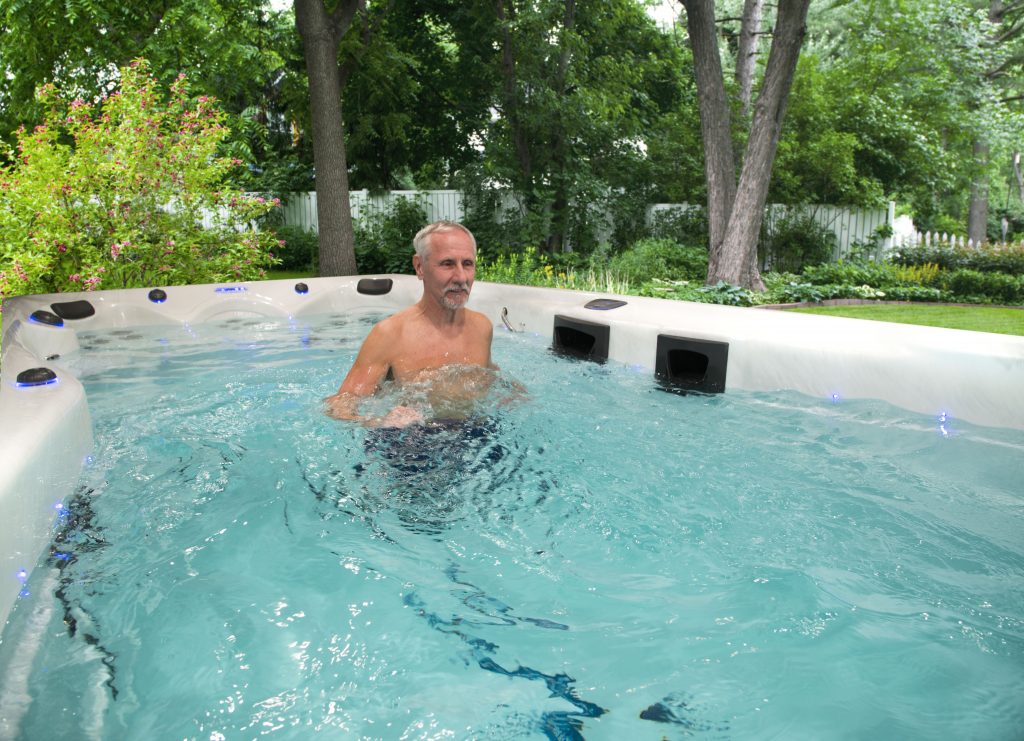by Jay Jarden
While I’m no celebrity by any stretch, I’m garnering a bit of a reputation locally for my participation in a number of Ironman competitions, triathlons, trail races, and similar competitions over the past couple of years. I’m hoping that what I’ve learned during my journey to becoming a triathlete will help you in your quest, as well. Here’s how I prepare my mind and body for a race of strength and endurance that will challenge your very soul!
Find a Triathlon & Sign Up
Nope, don’t start with training. Don’t wait until you find the right trainer. Especially don’t wait until you meet this-or-that fitness goal. Sign up for an event 3-6 months from now. Now that the clock is ticking, the pressure is on! You’ll be far less tempted to postpone your dreams, or worse, never do it at all.
Get an App
There are so many on the market! I’m not endorsing any particular app, but the triathlon magazines and blogs are chocked full of great recommendations. Read the reviews before downloading one, particularly reviews by experienced triathletes who can tell you for sure how well that app prepared them for a race.
Carve Out Training Time
Some triathletes are early morning trainers, others go in the evenings, and a fair share do it midday, on their lunch breaks. While research suggests that between 4:30 and 8:30 pm might be ideal, there are plenty of successful athletes that hit the pavement at 5 am or noon. Definitely consider the time of year when scheduling your training sessions. Noon on August 1 in Miami or 5 am on January 31 in Cleveland probably isn’t your best bet.
Choose a time that weather and temperature are least likely to affect your workout, as well as a time that family and work obligations are least likely to interfere. Does your boss tend to text you at 7 am every morning with an emergency? Maybe your kid misses the bus 3 days a week and needs a ride. Perhaps an evening workout is best for you.
Eat Right
So many articles and books and blogs focus on the workout part of training, but how you fuel your body is just as important. In order to gain the tremendous personal satisfaction of crossing that finish line, you’re going to have to give up some foods. But, honestly, they’re foods better left alone anyway. Swear off those heavily processed foods that come in plastic packages, and fill up on amazing whole foods, including lean meats, fruits, and vegetables. A great way to assure you’re getting the right balance of all necessary nutrients is to “eat the rainbow”. Fill your shopping cart with colorful fruits and vegetables. With some red, orange, yellow, green, and purple, you’ll have a great balance of all the good stuff.
Though protein is often touted for those who workout, triathletes only need moderately more meat and poultry than anyone else. Protein is primarily for bulk, and you don’t want bulk! That’s just more to carry those long, long miles. Also, carbs aren’t the bad guys. You’ll depend on carbs during training, as well as for essential fuel on race day. Oh, and a quick word about that — test out your training day menu ahead of time. Everybody is different, and the protein-fat-carb ratio that worked brilliantly for [insert world-class triathlete here] might not work for you.
The Fourfold Facet of Training
You won’t run, bike AND swim every day. You’ll do two training exercises per day, alternating so as to rest certain muscles and train others in concert. For instance, some days I run and then swim. Other days I bike and then workout with weights. Yep, weight training should be a part of your triathlon training regimen! You’ll need that strength and endurance for those 7 or so hours of racing. Trust me!
Many people aren’t sure how they’ll get their swim training in, because they don’t have a backyard pool and the local public swimming pool is, besides yucky, full of kids who are playing and not at all concerned about how many laps you’re getting in. I depend on a swim spa to get my swim training, and this might be the ideal solution for you, too. Swim spas take up much less room in your backyard and can even be installed in many homes. There’s no stopping to turn when you’re swimming “laps” and a swim spa is usually quite a bit less expensive than a swimming pool.
You can also turn to an online trainer or personal coach to help you train. Mine emails me weekly with my training schedule, and the accountability truly helps me keep on track.
Do you need a swim spa to train for a triathlon? Download one of our brochures to learn more.
Happy training!

